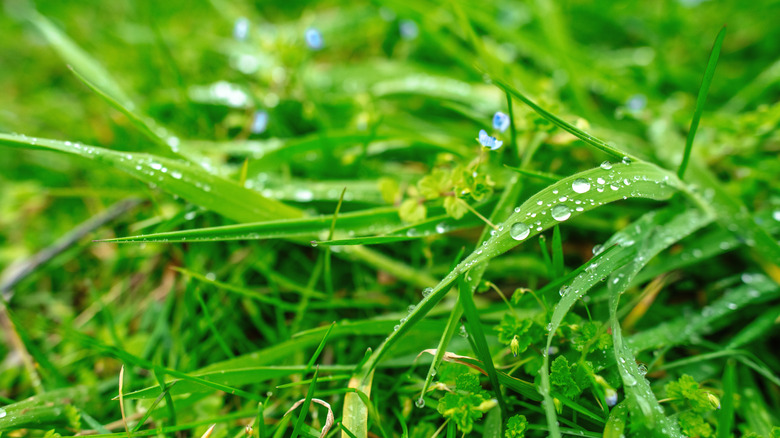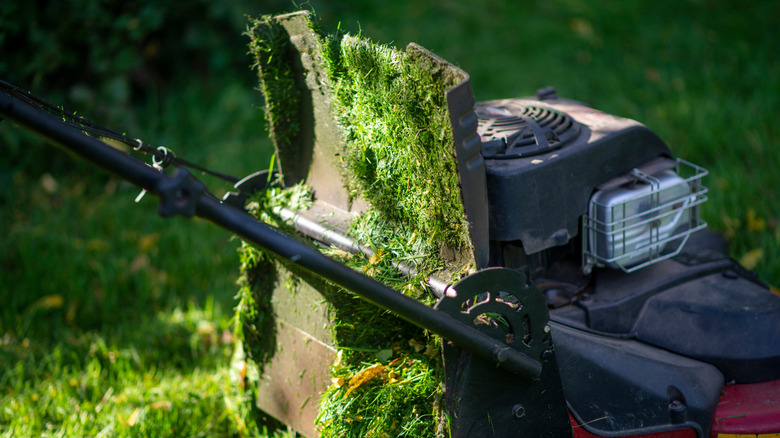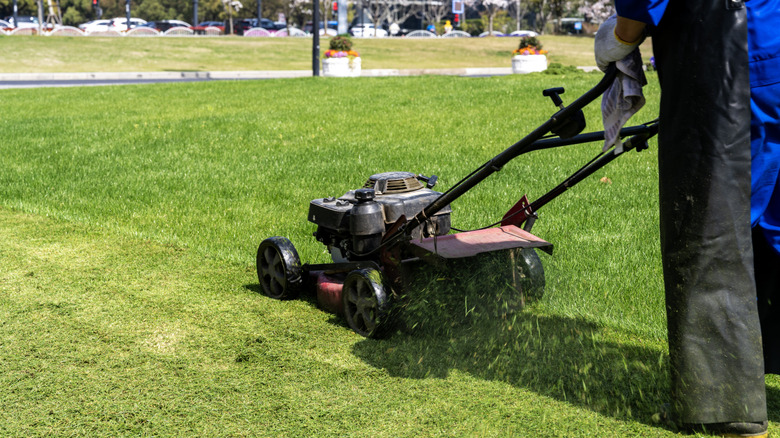The Potential Dangers Of Mowing Wet Grass, And What To Do Instead
It doesn't take much to turn a simple mow into a costly mistake. That light, wet sheen on your lawn after rain is more dangerous than it looks, and it can wreck your grass equipment, damage your turf, and put your safety at serious risk. Clumps of wet grass collect under the deck, bogging down the blades and pushing the engine into overdrive. You may be able to power through the job, but it'll come at a cost of overheating your lawn mower, dulling the blades, or rusting out metal parts from the inside.
In gas-powered models, moisture can even seep into the fuel system and mess with ignition. Moreover, wet grass turns your lawn into a slip-and-slide type of situation. One wrong step on that slick turf, and you could end up flat on the ground, possibly near fast-moving blades or under a heavy riding mower. If you're using an electric model, water and electricity become a dangerous mix that could lead to a shock. And if your mower's already struggling and the ground's slick, your lawn starts to suffer too. So, instead, consider only mowing when your lawn is dry.
Common lawn problems caused by mowing wet grass
Cutting down damp grass can leave lasting scars on your lawn, even if the damage isn't immediately visible. Wet grass blades tend to fold under the mower instead of standing tall for a clean cut. That results in ragged, torn tips rather than smooth slices, and those shredded ends are far more susceptible to grass root rot and decay. These frayed edges create entry points for fungal pathogens, which thrive in moist, damaged tissue and can quickly spread across your yard.
On top of that, wet clippings often clump together, forming thick mats that block sunlight and suffocate the grass beneath. This could lead to yellowing, rot, or dead patches if not cleared away. Other than that, if your soil is soft (which it usually is after rain) the mower's weight can press into the ground and leave deep ruts. That kind of soil compaction crushes grass roots and limits airflow underground, weakening the turf over time. Fixing it often means reseeding or aerating, which turns one quick mow into a costly weekend project.
Safe mowing tips for wet weather and damp lawns
If your lawn is wet, the best move is to wait. Let the morning dew dry off and give your grass a day or two to dry after rain. A quick test can tell you if it's safe to mow. Walk across the yard in regular shoes. If your soles come back wet or grass sticks to them, the lawn's not ready. Still, after days of rain, waiting it out isn't always practical. In those cases, mowing safely is all about technique. Start by setting the height on your lawn mower a notch higher than usual. A higher cut reduces strain on both the grass and the machine, helping you avoid damage in already vulnerable conditions.
Then slow down and mow in tighter, overlapping passes to reduce strain from the wet clippings. Those grass clippings will still clump more than usual, so stop often to check the deck and clear out buildup before it jams your blades. This goes without saying, but don't forget about your footing. Wet grass is slick, especially on slopes, so wear shoes with a solid grip and skip the hilly sections until they're dry. A cautious approach might take more time, but it'll protect your lawn, your mower, and most importantly, you.


